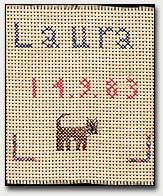 |
 |
 |
 |
 |
 |
 |
 |
 |
 |
 |
 |
 |
 |
 |
 |
 |
 |
 |
 |
 |
 |
 |
 |
 |
 |
 |
 |
 |
 |
 |
 |
 |
 |
 |
1898 Physical Exercise was introduced into the timetable. The children did not have lessons for longer than an hour and a quarter without a break.
By1900 the Diocesean Examinations started, when a member of the clergy would come in annually to examine the children’s religious knowledge. |
 |
 |
 |
 |
 |
 |
 |
 |
 |
 |
 |
 |
In 1901 ,the Board of Education introduced Article 84b to the school, which determined the class syllabus; |
 |
 |
 |
 |
 |
 |
 |
 |
 |
 |
 |
 |
 |
 |
In1901,the boys were studying drawing, while the girls took Needlework. Garments were made, and inspected by the Ladies of the Sewing Committee, who were usually Trustees’ wives or family, and visited regularly. |
 |
 |
 |
 |
 |
Needlework was an essential part of the girls education. They made garments in school and could take them home for their families to purchase at cost price. Although, due to sexual equality and changing lifestyles, we do not study these skills in the same depth today, they still have a place in our school timetable. |
 |
 |
 |
 |
 |
 |
 |
 |
 |
 |
 |
 |
 |
 |
 |
Conversational lessons for the Upper classes were taken on Friday afternoons with “guest speakers”, such as the Vicar or Trustees, and titles like
“Chivalry”
“Peterborough Cathedral”
“Manners - Half a score of Don’ts”
“Hymns and their Writers”
“Animals and Birds and their Protective Colours”
“Trees”
“Stories about Brer Rabbit”
“The Great Civil War”
“Hops, Hoppers and Hopping”
The school day usually closed at 4pm altered to 3.45pm in July for the children to take tea to the harvesters.
|
 |
 |
 |
 |
 |
 |
Previous Page |
 |
 |
 |
 |
 |




